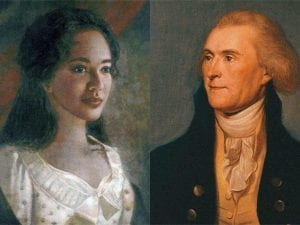A historical novel borrowed from historical truth, Clotel is the tragic tale of three generations of biracial women in the antebellum south, where William Wells Brown dives deep into the issues of enslavement, politics, and religion in America. He interweaves this dramatic tale where enslavement is justified due to religious doctrine that classified certain skin tones as “less than.” Through the lens of American exceptionalism, he highlights the issues with the American legal institution that rejects the very rights, truth, and morality it prides itself on.
Brown introduces his world vividly and violently with a slave auction. There we meet President Thomas Jeffersons’ enslaved “mistress” Currer, and his two children Clotel and Althesa discarded to seas of cannibals hungry for human flesh. Cognate to a thesis statement, Brown states the purpose of Clotel while also taking a stance on American Exceptionalism.
“Clotel was sold for fifteen hundred dollars, but her purchaser was Horatio Green. Thus closed a negro sale, at which two daughters of Thomas Jefferson, the writer of the Declaration of American Independence, and one of the presidents of the great republic, were disposed of to the highest bidder!”(80).

Brown utilizes Clotel’s unique paternal link to Thomas Jefferson, a core contributor of the “Declaration of American Independence,” to exhibit the convoluted hypocrisy America exists within. In part, the United States is proud of its “innovative,” political systems superior to others that should be admired for the “great republic.” Brown, however, illustrates how this same system allows the creator of said exceptionalism offspring to be enslaved and sold to the highest bidder as cattle. He forces readers to evaluate the hypocrisy of American superiority in the plantation South and in the so-called “free states” of the North. It’s a condemnation of the country falsely advertised as the “land of the free” an entire race of people remained shackled within it.
Brown’s audience primarily consisted of Europeans, or, more specifically, the English, due to the publishing location in London. In 1854, Bristol Mercury published an article reviewing Brown’s Clotel. The news article provides a brief summarization of the novel and significant passages while praising Brown’s book for its “simple yet graphic power”(223). Brown’s dramatic, impactful story of the American problem appeared to be well-received in England. Surprisingly enough, the newspaper did not hone in on the southern aspect of enslavement, but on the failed system of America. The article states, “in particular the volume strongly illustrates the social evils springing from the gross immortality to which the ‘peculiar institution’ conduces” (223). This pushes past the physical enslavement of black and multiracial people in the south, but further extends to include the entirety of the United States condemning everyone within the system.
Works Cited
A Slave Auction. . Richard Subber. richardsubber.com/wp-content/uploads/2018/05/Slave-auction-wikimedia-A_Slave_Auction_cropped.jpg.
Brown, William Wells. Clotel. Edited by Geoffrey Sanborn, Broadview Press, 2016.
Clotel. bookstore.trnty.edu/clotel-or-presidents-daughter-ed-fabi-p.


Hi Codie,
Really excellent job with visual media here. I particularly appreciated the way in which Clotel’s reception in England suggests that English readers saw slavery as an “American problem” rather than just a “Southern problem.” How do we square this sort of virtue posturing with the fact that the British Empire is still practicing slavery in the East Indies (despite the fact that England passed the Slavery Abolition Act in 1833? Like I said with Grace’s post, it’s almost as if we can make the following analogy with regard to the attitude that English reformists have towards the practice of slavery versus the attitude that US abolitionists have towards slavery: America is to England as the US South is to America (i.e., nationally and morally inferior).
All best,
JRJ